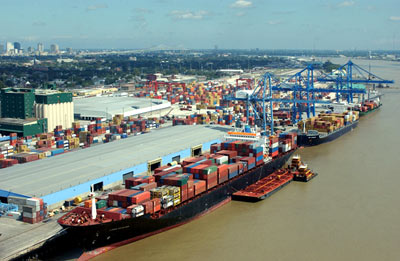
JANUARY 2005
Louisiana: Why Industry Is Moving Back to the Bayou State
Sir, the Governor's
on the Phone
First Among Equals
Education-Industry Partnership
Port Gets Retooling for 21stCentury Commerce (sidebar)
Bringing the
Students Home
Blanco: Ethics
Is Job One
Shreveport's Aerospace Industry Gains Altitude (sidebar)
GM Plant Hums Along
How Louisiana
Beat Ohio
Education Inroads
Foundation Gives Biotech a Boost
Enhanced State Economic Development Portal to Debut (sidebar)
Industry Clusters
Gain Traction
Transport Complex Would Reclaim Louisiana's 'Gateway to Latin America' Status (sidebar)
Container-on-Barge
Is Key
Energy Industry
in Transition
Request Information



